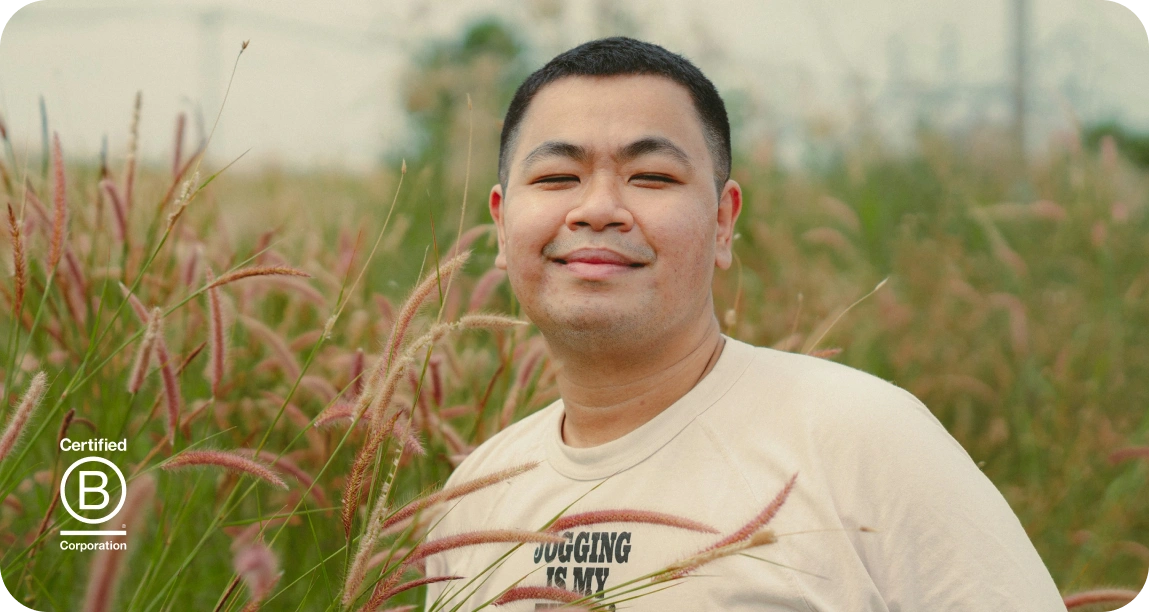A free training program for training CS reps with the skills, tools, and knowledge to delight customers and resolve issues.
Millie has changed the rules of workplace giving. Has made CSR programs accessible to small companies. From matching employee donations to volunteer events and bespoke campaigns. We have met Rachel Klausner the founder and CEO at Millie, the workplace giving platform that lets companies of all sizes start social impact programs.
Millies mission is tobuild a home for giving, by connecting people and nonprofits.
https://youtu.be/qPrN5AMP0DA
Rachel how did it all start?
Well, we definitely had a pivot story. Like most startups, we were really focused on individual giving and how could we engage Millennials, which is where our name Millie comes from. Engage Millennials in what we call strategic giving. Giving them this tool called a donor-advised fund.
So if they could then give strategically put money in, get the tax reduction upfront and give it out over the course of the year, we quickly pivoted and made the decision that we were going to start building out tools for companies.
We got pretty lucky, two local companies came to us asking: "Oh, can you build this for our team? We want to do matching and all this other stuff... And we're like: "Oh, aren't there other tools for that?" They replied, "Not for our size business. We're not an enterprise business, so we don't qualify for the current tools out there".
And we're like, wait a second. Hence thankfully, to those two companies, that kind of just ended up becoming this really great guidepost, that was like, okay, let's try this other path. We had no idea if it was going to be successful, what was going to come of it, but we pretty quickly ditched the individual route. It wasn't performing in the way that we wanted. It wasn't utilizing our skill sets.
My background was in kind of B2B technology. So anyway, it made way more sense. So we pivoted to workplace giving and have never looked back. And it's been really fun to see companies engage their employees and giving.
What problem is Millie trying to solve?
So what is Millie solving? I always like to say we are for companies of what we call all sizes. But if you are like a Fortune 100 company, we will probably send you to a competitor, only because we really are going after and we're really trying to solve for workplace giving, match programs, grantmaking, volunteering with employees, anything that would happen in the workplace around giving back. That is what our platform is all about.
What we're most successful at and doing is partnering with small, medium, mid-market size businesses. So if you're around 5000 employees or less, we do a really good job, the platform is really for you and your team. And that's what we're solving for, because the folks that have been in the space for a while have really done a great job at solving for the large enterprise companies and honestly have not really catered their product towards smaller businesses or even medium-sized businesses.
We want to make it easy, to get up and running. A lot of them have really long waits to get up and running because our software helps walk you through launching. You can get up and running as quickly as if you'd like, which is awesome.
It's also much less expensive. One of the things that we found very frustrating is that when we spoke to companies, they ended up spending the same amount of money on their software as they did on actually giving, because the software that's out there costs so much money.
How can you sleep at night knowing that, like, half of their budget for giving is going into the technology that's orchestrating it? That was a really conscious decision. Sometimes we've had a lot of conversations with now customers, who have asked us: Why are you so much cheaper than these players that have been around for so long? You have the same amount of features. If not, you have some more features than they do.
Our answer was: "No, it's really it's because we know that we only want to be a certain percentage, a small percentage of what you're giving totally".We don't want you to feel like half of your budget has to go to this. We want more money to go to charity. And we know that's usually coming from the same budget.
So for us, that was really a conscious, important decision. Trust me, we've had a lot of conversations. The first time I told a company the price of what we charged, the CMO of a company told me: "Rachel, I'm going to do you a favor, you need to up your prices". And replied: "Thank you so much I'm so grateful for your candid response, but I'm going to push back a little and say, we're going to charge what we need to charge to stay in the business".
But at the same time, we really want to make sure that you're not carving out and giving us too much of the budget that really you want to give to charity. And so that's really a conscious decision that we make.
A Smarter Way to Build Your Global Team
What are the next steps?
The other piece that we're really trying to tackle is really all about participation. So what we've seen is the standard participation in these programs is very low. So the bar is very low.
If I share some of those numbers, it would be really painstaking to hear. But basically, around 10% of people that can participate in a match do. So there's a lot of money is left on the table. And to us, that 10% number is just not acceptable. So, we're really trying to build out tools like our Slack integration. We're doing a few more integrations coming out in the next bunch of months, some gamified giving tools, a whole bunch of different tools that really focus on getting higher engagement because the current status quo from the incumbent software, it's just not okay.
We want to make it really easy and engaging for a larger percentage of your team to give back with the company.
A big part of what we're doing is really trying to figure out how do we engage these teams. And we're really thinking outside the box. You'll see, in the next year, we'll have a lot of tools.
We came out with a Slack app. We were the first that did Slack match programs like this, and we're constantly thinking about where are our teams already, what will get them engaged? Because for us, the status quo is not okay.
We still could be growing our business and all this stuff. But if the match isn't getting utilized beyond that 10-11 percent number, I'm not going to be happy. I want to push us. And I want to push the industry to do better.
We're definitely trying to think outside the box on different ways to engage teams that really move that number up. And we're lucky in the sense because we're dealing with smaller companies, companies that are 1000 employees, 500 employees, 50 employees. Those teams are much more engaged in general. And so that 11% is way higher. Our engagement rate is much higher. But still, I want them to push us.
We need to really be at the forefront of those participation rates and helping pull the industry right.
Historically, the average what we call match cap per employee has been very high. So that's because most companies that have done match programs have been these large Fortune 500 companies.
The average match cap is around 5-10 thousand dollars per employee, which is so high. Hence what we tell our customers is: don't start with that amount. Start with what you're comfortable with. It can be $100 $200 per employee. You can still have an overall company cap that's even lower. And don't feel like you have to do these huge numbers just to get people engaged. Your employee isn't gonna judge you. If you're doing a $5000 cap or a $100 cap, it's just that that giving together will be very powerful.
It does not have to be an insane amount of money to do what it does, which is connect you as a company with your team and give back while you're doing it. That's something that we've had to kind of push. It'll be interesting to see over time if we really can convince people that they can do this for a lower amount of money and their people will still feel super engaged.
What are the main learnings from this experience?
Honestly, I think a lot of the advice that was given to me by other founders has been the advice that I stay over and over in my head to this day, which is like being a founder is the craziest roller coaster.
The highs are so much higher. The lows are so much lower than just doing your average job or being a regular professional and not being a crazy person in doing this. So I think that to me, like, I constantly tell myself that because I think it can be really hard when you get to one of those low points and you're like, Should I keep doing this? What am I doing?
So I think that has been just really I remember someone telling me that and it's really helped me in some of those low moments, but also helps ground me in some of those high moments.
And so just say, it's really nice to ride these high waves when a day, some days are amazing and you've got tons of deals closing and you feel like, oh, man, we're really doing a good job here.
But just note that trying to be a little bit humble and realize that that's one day in the perspective of the week, in the month and the year, and there will be days coming that will be more normal and just to give yourself some perspective. Because sometimes founders, myself included, you could have a great day and you could be like, "Okay, let's go hire those other few people!... Let's go do those other things that we want to do!"
Okay, slow down. It's just one of those extra highs.
I'm just trying to keep myself more leveled during those super high than super low moments.
What are the traits you're looking for when you're in the process of hiring a new collaborator?
The first thing I used to appreciate back in the day was their passion. And then what I realized for social impact, I should say what I realized is there are a lot of people that are passionate about social impact. And so what I look for is obviously that's the baseline, right? You got to have that passion for social impact.
That is key. But beyond that, I really look for people that are self-starters and for people that like to wear a lot of hats. That's because we're still at that startup phase, right? When you're a company and you're only a handful of people, I would say if you're under 30 or 50 employees, that's kind of the bar. You want people that are willing to wear so many different hats because the business is going to change, the business needs are going to change, and you want someone that can be flexible because if you're not flexible at that early stage, that's where things tend to break. Because someone can't step in and wear that extra hat.
I always look for someone who's excited about wearing a lot of different hats and also who's very good at being their own boss in a sense. Obviously, I want you to take direction and all that. But honestly, if you can be like a go-getter on your own and you're going to just execute and you don't need me to hold your hand.
You're just one of those people that's just driven just for the sake of drive and getting stuff done, that is what I look for.
The engagement around different cause areas definitely flows with new stories and with what's happening in the world, but it also flows with what's happening within the company.
One last comment about Corporate Giving?
Companies oftentimes run campaigns. We see some great engagement around campaigns. So there's definitely this uptick. If a company is doing a veteran relief campaign, we'll see a lot more giving to veteran organizations within that company for that month.
But then we also see general giving, the annual match that folks still put out there. People still give to their local organizations that they're involved with and get that match from their employer. And it feels really good. It does. It's really fun to hear the stories of employees who come to us and are like: "Thank you so much for doing this". And our answer is: "Don't thank us, thank your employer!" They're the ones that have orchestrated this and put the money out there.
People feel very connected when their employer is saying, we believe in what you believe in. If you're putting money towards the cause that you love, we want to match that.
How powerful is that?
Work for Impact supports brands and organizations for a better world
If you want to learn more stories from startups in the impact space, check the series: Work for Impact Meets.
We believe in setting goals that benefit everyone, not just ourselves. By working with socially and environmentally responsible organizations and nonprofits, we want to promote projects that have a positive impact on the world as a whole. At Work for Impact, a job is not just a job. It is the beginning of a larger journey that will unlock future potential and provide meaningful opportunities worldwide. Sign up for free and start discovering new ways to make an impact.




